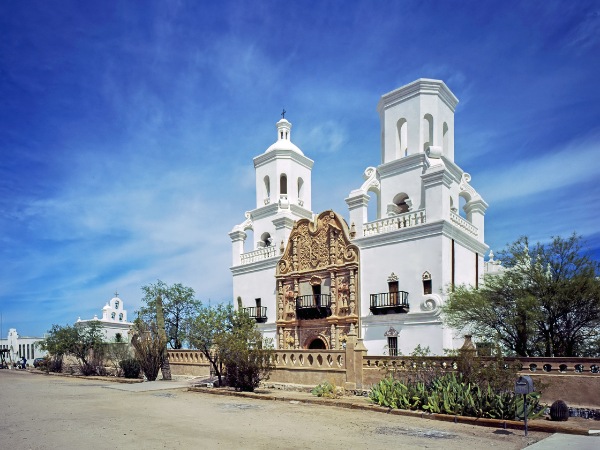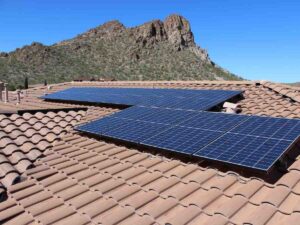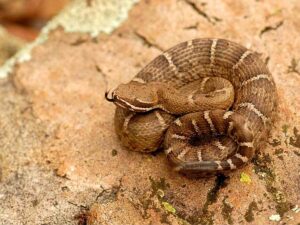The history of Tucson offers newcomers a captivating journey through time, uncovering the city’s rich cultural and historical tapestry. Nestled in the heart of the Sonoran Desert, Tucson has a story that stretches back thousands of years, making it a fascinating destination for those relocating to Tucson or simply exploring its unique charm.
Ancient Beginnings: The Hohokam Legacy
The earliest chapter of Tucson’s history begins with the Hohokam people, who thrived in the region as early as 300 CE. This ancient civilization is credited with building one of North America’s most sophisticated irrigation systems, which laid the groundwork for agriculture in the desert. Newcomers interested in the roots of Tucson can visit Mission Garden, a living agricultural museum that recreates the Hohokam’s farming techniques and preserves their legacy.
The Founding of Tucson: Spanish Influence
One of the most iconic landmarks from this era is the Mission San Xavier del Bac, a stunning example of Spanish Colonial architecture built in the late 1700s. Known as the “White Dove of the Desert,” this mission continues to serve as an active place of worship and a historic treasure for visitors to explore.
In 1775, Tucson officially came into existence when Spanish settlers established the Presidio San Agustín del Tucson, a walled fortress that protected the settlement from Apache raids. This marks the city’s transformation into a vital military and cultural hub under Spanish rule. Today, the Presidio Museum offers a detailed look at this era, showcasing original adobe structures, artifacts, and reenactments that bring the history to life.
Mexican Independence and Tucson’s Transition
When Mexico gained independence from Spain in 1821, Tucson became part of Mexican territory. This period enriched the city’s cultural fabric, with Mexican traditions, architecture, and cuisine influencing its identity. Visitors can experience this heritage at El Tiradito Shrine, a historic wishing shrine rooted in local folklore, and the Historic Barrio Viejo, a neighborhood that preserves the vibrant adobe homes of the 19th century.
The Gadsden Purchase and American Expansion
Tucson’s journey took another turn in 1854 with the Gadsden Purchase, which transferred southern Arizona to the United States. As a result, Tucson became a key player in the westward expansion. The city served as the Arizona Territory’s capital from 1867 to 1877, solidifying its role in American history. The Arizona History Museum features exhibits from this era, including mining tools, weapons, and photographs documenting Tucson’s growth.
Tucson and the Railroad Era
The arrival of the Southern Pacific Railroad in 1880 was a transformative event in Tucson’s history, connecting the city to national markets and spurring economic growth. This development also brought a diverse population of settlers, which shaped Tucson into the multicultural city it is today. Visitors can explore the Southern Arizona Transportation Museum to see historic locomotives and learn about the railroad’s impact on the region.
Tucson’s Modern Era: Growth and Preservation
Throughout the 20th century, Tucson balanced rapid growth with efforts to preserve its historic identity. Landmarks like the Fox Tucson Theatre, built in 1930, highlight the city’s cultural renaissance during this period. Similarly, the revival of Fourth Avenue, a historic shopping and arts district, reflects Tucson’s commitment to maintaining its unique character amidst modernization.
Tucson’s Indigenous and Multicultural Heritage
Newcomers moving to Tucson often find its vibrant mix of cultures one of the city’s most appealing aspects. Tucson’s Indigenous communities, including the Tohono O’odham Nation, continue to play a vital role in preserving traditions and contributing to the region’s identity. The Tohono O’odham Cultural Center and Museum offers a comprehensive look at their history, art, and ongoing contributions.
Outdoor History: Tucson’s National Parks
For those relocating to Tucson and eager to explore its history through nature, the city’s surrounding national parks provide a perfect introduction. Saguaro National Park, home to the iconic saguaro cactus, showcases not only stunning landscapes but also ancient petroglyphs left by the Hohokam people. Similarly, Catalina State Park preserves archaeological sites that reveal the daily lives of Tucson’s earliest inhabitants.
Tucson’s Festivals: Celebrating History and Culture
Tucson’s rich history is celebrated through vibrant festivals that newcomers and long-time residents alike can enjoy. Events like Tucson Meet Yourself, a folklife festival, and La Fiesta de los Vaqueros, the Tucson Rodeo, highlight the city’s diverse heritage. These celebrations provide a dynamic way to connect with Tucson’s past while experiencing its present.
Historic Dining: Taste Tucson’s Past
Tucson’s designation as a UNESCO City of Gastronomy reflects its deep culinary history. Many of the city’s oldest restaurants offer a taste of this legacy. El Charro Café, established in 1922, is the nation’s oldest Mexican restaurant continuously operated by the same family. Sampling its dishes is a delicious way to connect with Tucson’s cultural and culinary roots.
Educational Opportunities for History Enthusiasts
For newcomers relocating to Tucson who are keen on diving deeper into its history, the city offers numerous educational resources. The University of Arizona’s Arizona State Museum houses extensive collections of Indigenous artifacts, while the Center for Creative Photography features works by iconic photographers who documented the Southwest.
Conclusion: Tucson’s Timeless Allure
Exploring the top history of Tucson reveals a city that honors its past while embracing its future. For newcomers, moving to Tucson offers the chance to immerse in a vibrant community where history is woven into daily life. Whether through visiting historic sites, attending cultural festivals, or simply walking through its storied neighborhoods, Tucson’s history is a resource that continues to inspire and connect.
Request your free Tucson Relocation Guide here




